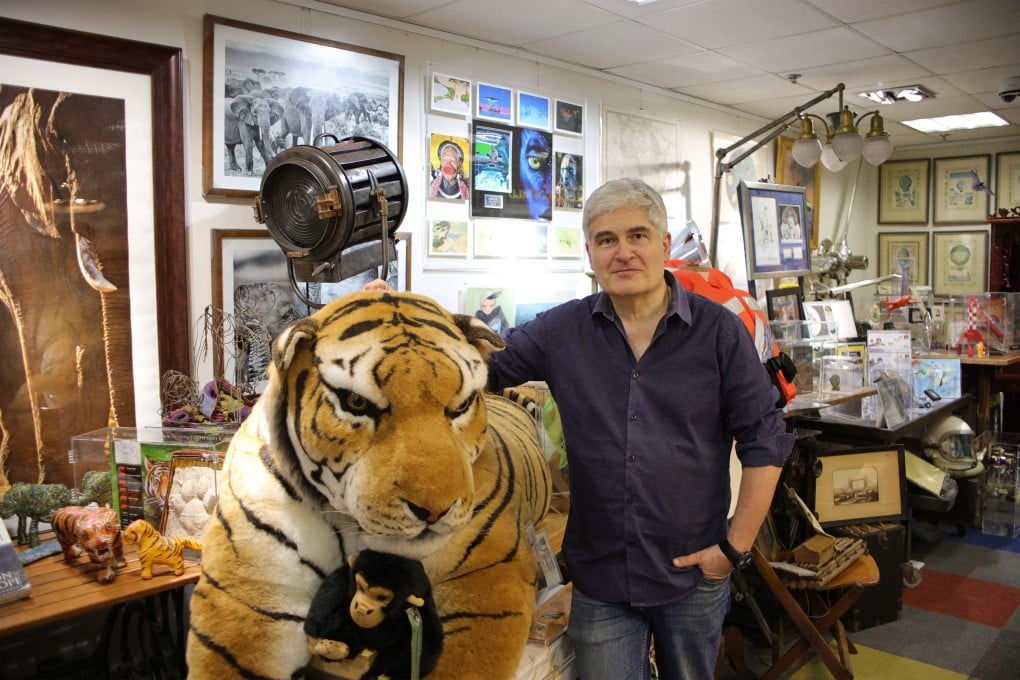Christian Pilard’s Little Museum of the World in Hong Kong: pet a prehistoric mammoth or marvel at a meteorite
- Located in an industrial building in Chai Wan, this ‘Aladdin’s Cave’ occupies just 130 square metres – but is full of surprises

At 9.20am on February 15, 2013, a meteorite exploded above the city of Chelyabinsk, in Western Russia. Burning a streak of light across the morning sky, the superbolide, or fireball, about 18 metres in diameter, weighing roughly 12,000 tonnes and travelling at 19km per second, produced on impact a seismic wave recorded at magnitude 2.7, making it an estimated 30 times stronger than that of the first atomic bomb.
Though buildings were damaged by the blast and more than 1,600 people injured, no one, remarkably, was killed. The meteorite, thought to have been a part of asteroid 2014 UR116, from the Apollo group, eventually cooled off in a lake in the countryside.
Its journey wasn’t over, however. A fragment of the blackened rock has since found an unlikely new home: in the vault of an industrial building in Chai Wan, on Hong Kong Island. The vault also holds a collection of other space rocks, including meteorites from the moon and Mars, many collected from the Sahara Desert, in North Africa; and a rare Sericho pallasite meteorite, discovered in Kenya, which was once a part of Vesta, the second-largest inhabitant of the asteroid belt between Mars and Jupiter.

These little wonders, reminding us of our place in the universe, are part of the collection at The Little Museum of the World, which opened last month and brings together more than 2,000 objects, including dinosaur fossils, tools used by early humans, a landmine, a World War I gas mask and a letter written by a prisoner in Auschwitz. “It’s the highest density of meaningful objects in the world,” founder and curator Christian Pilard tells me. “Every single item has an incredible story.”
Hosting just about everything from a 3.5-billion-year-old rock (from Australia, containing zircon crystals) to modern memorabilia (a book signed by Nelson Mandela, a microphone signed by Paul McCartney, a football from a bombed pitch in Ukraine), the museum is, according to its website, “a mind-blowing educational time machine” with a mission to connect people to the past and persuade them to think about today’s social and environmental challenges, from poverty to climate change.

Notably, the collection includes an abundance of curios from across Asia. From Liaoning province, for example, come Oviraptor eggs and a similarly fossilised, 25cm-long juvenile Psittacosaurus, a ceratopsian dinosaur (Psittacosaurus lujiatunensis), both exhibits hailing from the Cretaceous Period (145 million to 66 million years ago).
